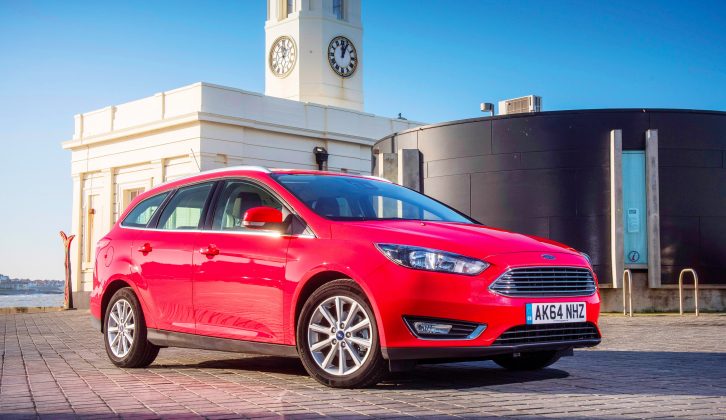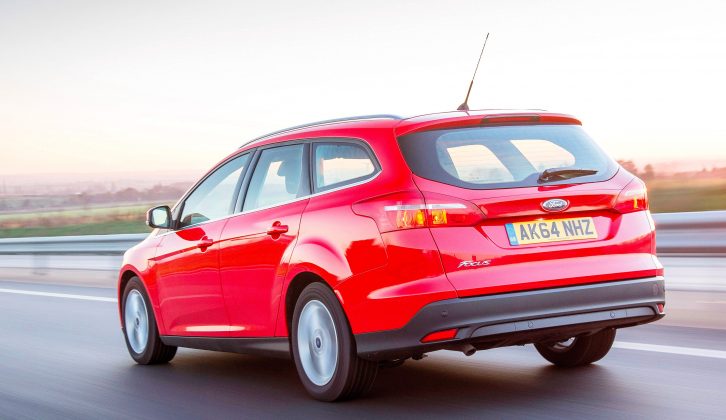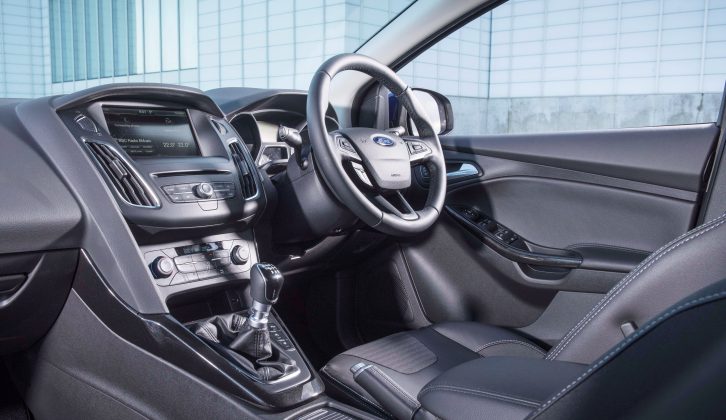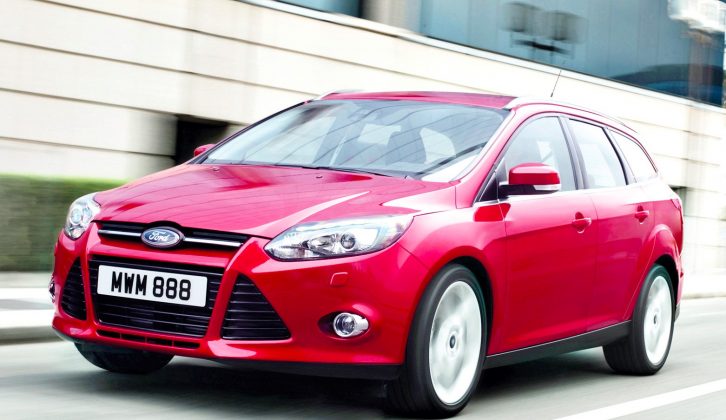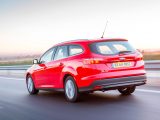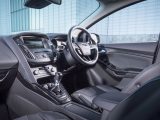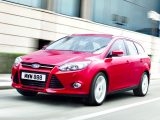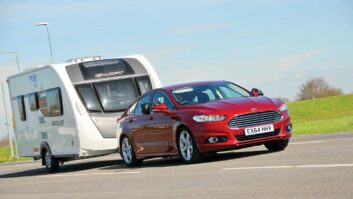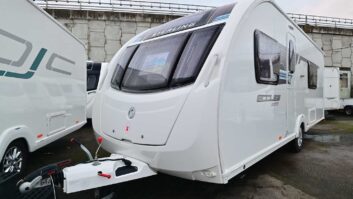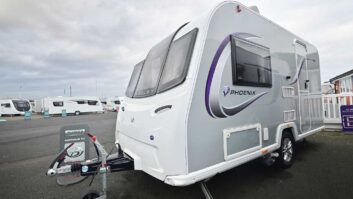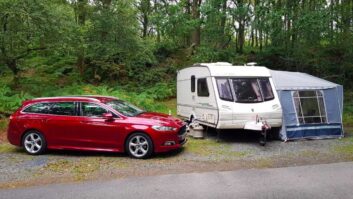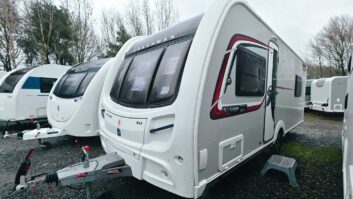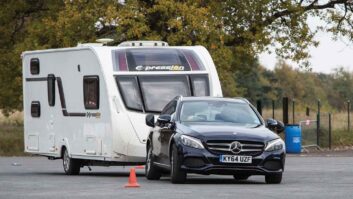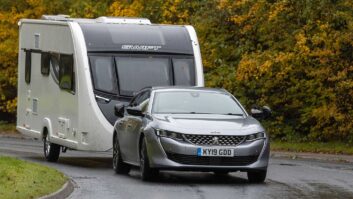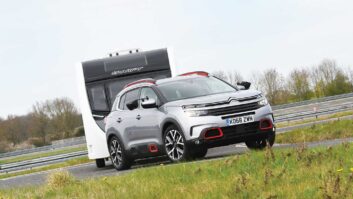The Mk1 Ford Focus wowed buyers with a combination of futuristic looks and staggeringly good driving ability.
Come time for the Mk2 in 2004, Ford kept the looks and driving experience similar to those of the first car, for fear of upsetting the legion of fans.
The Mk3 Focus had a much tougher job, though, because things had moved on in the car market, so people’s expectations were much higher. Hence the edgier appearance, efficient powertrains, and vastly enhanced level of luxury inside.
Throughout its life the Focus has had numerous engines, starting with a 1.0-litre three-cylinder turbocharged petrol and extending up through a non-turbo 1.6-litre four, 1.5- and 1.6-litre turbo petrols and topping out with a 247bhp 2.0-litre turbo four-cylinder motor.
Perhaps of more interest to those wondering what tow car to buy next, are the diesels of 1.5-, 1.6- and 2.0-litre capacities.
The best option for tow car buyers on a budget is the 138bhp 2.0 TDCi engine, which blends decent strength with economy. It even sounds reasonable for a diesel.
Model history
‘Move the game on’ was the somewhat tricky target for the designers of the Ford Focus Mk3.
It was something the original Focus certainly managed, but that the Mk2 emphatically did not.
Car buyers in 2011 were a discerning lot: they had become used to obvious luxuries to keep them comfortable, and also wanted plenty of invisible technology to keep them safe.
The trouble is, all those desires tend to add weight, which slightly complicates their third desire – to have a car that drove with the vivaciousness of the original.
A stable towing companion
Still, Ford did a cracking job, because the Focus undeniably has much of the driving flair of its predecessors.
It steers accurately and fluidly and, while the body control is rock-solid, the ride quality is merely firmly supple.
The biggest stumbling block in the way the Focus conducts itself is the fact that some urban potholes crash through to the cabin more insistently than you might like.
For towing, you would be best advised to steer away from the petrols, because in the drive for high mpg and low CO2, they’re smaller and turbocharged, which means that most of them simply don’t have the low-rev grunt needed when getting a fully laden outfit off the mark.
The more powerful 178bhp 1.5-litre EcoBoost engine might have the strength, but then it’ll likely drink like a boozer at opening time when hitched up.
Diesels deliver
Diesels are the way forward. The 1.5- and 1.6-litre TDCi units are economical and punchy, but the best option is the 2.0 TDCi, which is offered with 138bhp or 161bhp outputs in early cars.
The lower-powered unit will be strong enough for most sensibly matched caravans, although you’ll need to change from sixth into fifth for motorway inclines.
Still, lane-change stability is strong, and the Focus pulls up quickly in a straight line under braking, even with a trailer attached.
There’s a decent amount of space up front, but those behind are slightly harder done by – though the estate betters the hatchback, whose sloping roofline means that headroom isn’t great.
The estate also boasts a good-sized and practical boot area.
Trouble spots
The good news is that the third generation of the Focus has not been subject to any safety-related recalls, and there are no recurring tales of serious woe.
The bad news is that any issues appear to be of the ‘niggling annoyance’ sort, and mainly comprise build-quality problems such as rattling interior trim, bits of plastic falling off here and there, and electronics glitches.
For example, some owners of cars fitted with the Ford push-button starting system have found that on occasion the system fails to unlatch the steering lock, and therefore will not start the car.
There have also been reports of the engine stop-start system failing to operate.
Inside, the infotainment system is complex and tricky to operate at the best of times, and is made doubly irritating when the system refuses to find and lock on to DAB radio stations.
Most of these issues can be sorted by software updates from your local dealer, of which there are many.
Check the clutch
Some owners have reported that the clutch can be a weak point, particularly on petrol-engined cars, so on the test drive make sure that you don’t have to raise the clutch pedal too far before it bites, and also feel for any clutch judder when you pull away from rest.
Either issue could signify that the clutch will shortly need to be changed.
The other thing to look out for under the bonnet is the cooling system, which has been known to cause issues on petrol cars.
There have been reports of coolant pipes splitting, which can cause serious overheating and, as a result, damage to the engine and the turbocharger.
Check the system is fully topped up, and look under the oil-filler cap to make sure there’s no telltale ‘mayonnaise’ that signifies potential head-gasket woes.
Verdict
The third-generation, 2012-on Ford Focus makes a competent tow car.
It’s reasonably heavy, which helps with outfit matching, and the diesel engines make light work of even heavier vans.
Best of all, depreciation hits the Focus hard, so there are bargains out there.
It isn’t perfect, though: the ride can be too firm around town, and there’s too much wind and road noise at speed.
If you can live with those foibles, however, take the time to trawl through the classifieds and you should find your perfect car.
Which is our top tug? It has to be the 2.0 TDCi Titanium. Its strong, smooth engine makes light work of towing and is reasonably economical, too – and Titanium trim comes with a long roster of standard equipment.
But we would avoid the 2.0 T ST. You’ll be the lairiest on site in the fast, feisty and funky ST. You’ll also arrive without your van, because the centre-exit exhausts mean you can’t fit a towbar!
What you need to know
You are looking at anywhere between £4000 and £25,000 for one of these 2012-on Fords.
Depreciation is not a friend of the Focus owner, but it’s a great help to the Focus buyer.
Early cars can be snapped up for as little as £3950, although as with any such ‘bargain’ it pays to carefully examine every inch.
Most examples at this bottom end will have been used as work tools, and so will have a mileage and condition that reflects that.
A few thousand more buys a car that’s likely to have been family-owned and cared for, and closer to £18k gets you a pristine, nearly new example with the bulk of its warranty remaining.
Here are some useful figures (for a Ford Focus 2.0 TDCi Titanium):
- Kerbweight 1421kg
- 85% match 1208kg
- Towing limit 1500kg
- Towball limit 75kg
If you want to fit a towball to your Focus, according to quotes provided by PF Jones, it will be £134.03 to fit a Brink flange towbar, or £183.84 to fit a Witter detachable tow bar.
When it comes to servicing, an interim service is £153.07 and a full service is £247.83, according to the team at Servicing Stop.
Depreciation hits the Focus hard, so there are bargains out there
